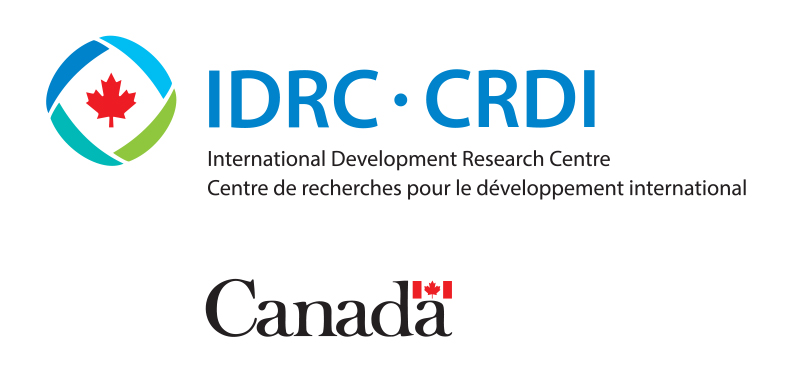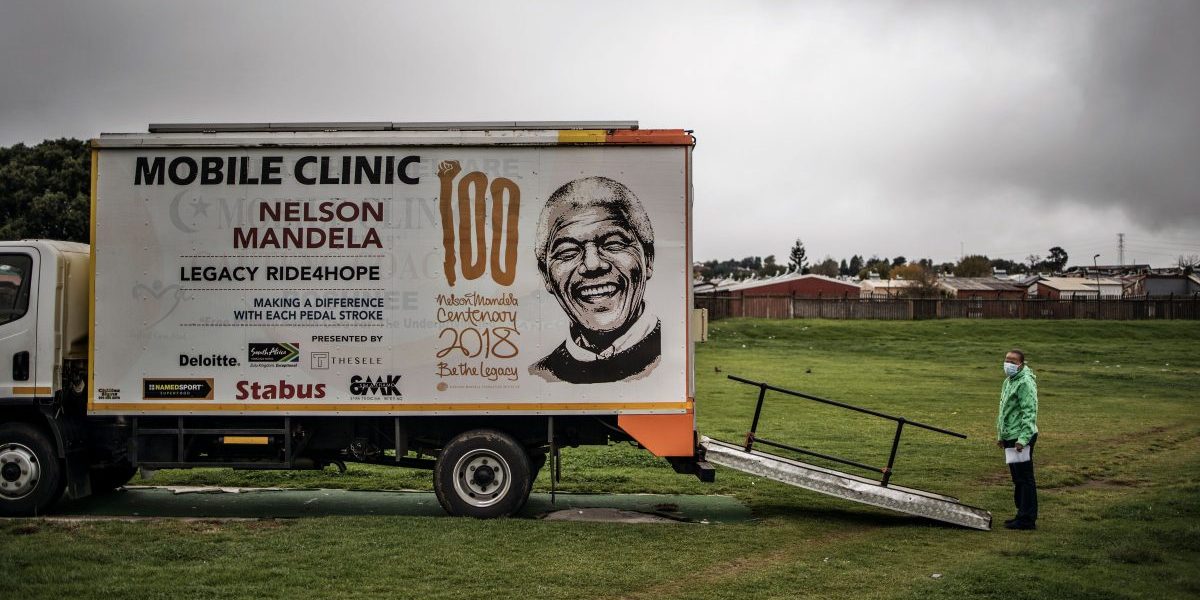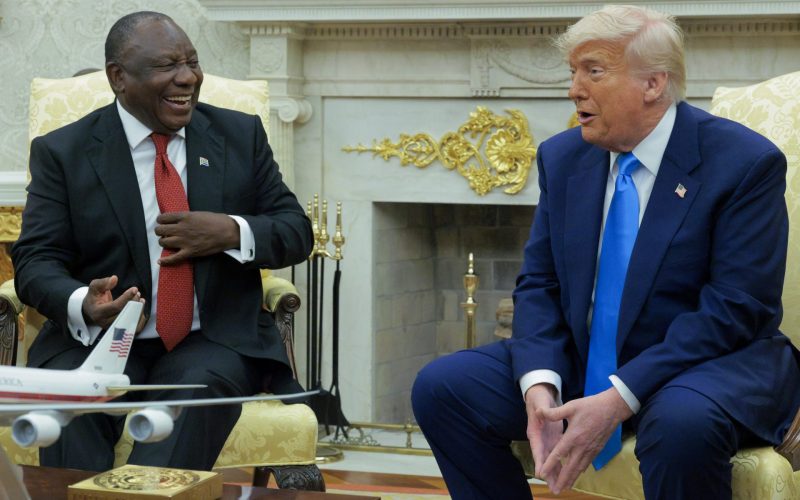Recommendations
- The Department of Trade, Industry and Competition and the Department of Employment and Labour should enable an entrepreneurship-friendly economy to encourage economic activity among youth. The Department of Forestry, Fisheries and the Environment, the Department of Mineral Resources and Energy, the Jobs Fund and the Department of Higher Education and Training should target special training and work-placement initiatives in green jobs for youth.
- The Department of Basic Education and the Department of Higher Education and Training should expand technical and vocational skills training in terms of both breadth and quality to address the skills–demand mismatch.
- The Department of Health and partners in the private sector should expand mobile and e-health services to bridge the access gap in terms of quality healthcare and take on the mental health crisis.
- National and local governments should include youth representatives in governance processes and report on decisions taken that were informed by and validated by youth.
Executive summary
With its robust policy and legal framework, South Africa holds much promise for its youth. However, after nearly 30 years of democracy, the country is in danger of becoming a failed state.1Tafi Mhaka, “South Africa Is Failing and It’s Failing Zimbabwe, Too”, Aljazeera, June 8, 2023; S’thembile Cele, “Africa’s Richest City Is Crumbling Under Chaos and Corruption”, Bloomberg, June 16, 2023 Its economy is in shambles and it experiences loadshedding multiple hours of the day.2Lucy Pawle, “South Africa Could Become Failed State, Says ANC’s Fikile Mbalula”, BBC News, May 23, 2023. Many rural communities lack access to safe water and other critical services.3Lindiwe C Mngadi et al., “Water, Sanitation and Depression in Rural Communities: Evidence from Nationally Representative Study Data in South Africa”, Psychology Health and Medicine 28, no. 9 (2023): 2441–2449; Anja du Plessis, “Basic Water Services in South Africa Are in Decay After Years of Progress”, The Conversation, August 1, 2022. Young people are frustrated with the lack of economic opportunities and political participation. Through the ‘Youth and Social Justice Futures: Identifying Future Skills and Training in Africa’ project, young people in South Africa identified several key areas that need urgent attention to achieve a socially just future for South African youth and for society as a whole. This policy briefing provides a summary of key reflections emerging from participatory research on youth and social justice futures for South Africa. It also presents policy recommendations as developed by 22 young people from different provinces in South Africa who participated in the virtual workshops in February and March 2023 on how government and civil society actors can transform systems to improve the future for youth.
Introduction
South Africa, the rainbow nation, is nearing 30 years of democracy. The country has many policies that promote social inclusion and economic development. Most notably, the National Development Plan 2030 (NDP) presents a vision of an ideal South Africa – one that is inclusive, equitable and just, and where everyone has the economic and social security services and opportunities they deserve.4National Planning Commission, National Development Plan 2030: Our Future – Make It Work (Pretoria: NPC, 2012). Young people are prioritised in this visionary development plan, recognised as key potential drivers in the country’s economic and social development.5NPC, National Development Plan. With this robust policy framework, South Africa should hold much promise for its youth.
South Africa has fewer than seven years to reach the ambitious goals set out by the NDP. During the Futures Literacy Laboratory and Three Horizons Framework workshops forming part of the project, youth expressed concern about the persisting challenges highlighted in the NDP – unemployment, poor and inequitable education, social discontent and continuing poverty. The legacy of apartheid contributes to many of the current issues facing the country.6Neva Makgetla, “Inequality in South Africa: An Overview” (Working Paper, Trade & Industrial Policy Strategies, Pretoria, 2020); Victor Sulla, Precious Zikhali and Pablo Facundo Cuevas, Inequality in Southern Africa: An Assessment of the Southern African Customs Union (Washington DC: World Bank Group, 2022). Inequality between racial groups remains high.7Risenga Maluleke, Inequality Trends in South Africa: A Multidimensional Diagnostic of Inequality, Report 03-10-19 (Pretoria: Statistics SA, 2017). As the economy continues to weaken, most people are under a heavy burden as basic goods such as milk, bread and sugar are overpriced.8Ali Conn, “Dichotomy of Abundance and Scarcity: The Paradox of South African Agriculture”, BizCommunity, May 29, 2023; Sarah Smith, “Rising Food Prices in South Africa: A Struggle for Daily Survival”, Mail & Guardian, March 30, 2023. The financial and social strain of the mismatch between rising prices and actual salaries is manifesting in the growing number of people living in poverty and hunger and in social unrest.9Clayton Hazvinei Vhumbunu, “The July 2021 Protests and Socio-Political Unrest in South Africa: Conflict Trends”, Accord, December 20, 2021. In the first quarter of 2023, South Africa’s unemployment level was one of the highest globally, at 33% of the population.10Statistics SA, “Beyond Unemployment: Time-Related Underemployment in South Africa”, Data Story 16312, May 16, 2023. More concerning is that over 60% of youth between 15–24 are unemployed11Statistics SA, “South Africa’s Youth Continue to Bear the Burden of Unemployment”, Data Story 15407, June 1, 2022. and 34% of youth are not in education, employment or training (NEET).12Gibson Mudiriza and Ariane De Lannoy, “Profile of Young NEETs Aged 15-24 Years in South Africa: An Annual Update”, Southern Africa Labour and Development Research Unit, June 29, 2023.
The South African youth participants in the project emphasised the lack of inclusive education responses, skills discrepancies and inadequate leadership opportunities for all youth, including the most marginalised. In addition, they pointed to the challenge of not being properly prepared to engage in decision-making processes. Through these discussions, the youth participants made it clear that they wanted a more positive and more socially just future for themselves and for future generations, and that the government should act on its mandate to drive inclusive development for all. In conceiving this future, they made the following statement:13Statement by South African Youth Participants in Youth and Social Justice Futures Research (Youth and Social Justice Futures: Identifying Future Skills and Training in Africa, Virtual Workshop, August 3, 2023).
We envision a future South Africa that has successfully addressed racial and economic disparities and inequality and whereby the youth are allowed in spaces of leadership and governing the country. We youth also desire a future where there is equal access for all people from different backgrounds to quality education and health in a safe and healthy environment, and a future where there is collaborative governance between government and community.
The policy recommendations made here reflect the desires of the youth participants for changes in education, employment and skills development and health, and the youth participation needed to achieve this vision.
Reflections on the project
Through the project workshops, which used Futures Literacy14UNESCO, “Futures Literacy” Labs and the Three Horizons Framework,15Bill Sharpe et al., “Three Horizons: A Pathways Practice for Transformation”, Ecology and Society 21, no. 2 (2016). participants explored their visions of a probable future, their desired future and the required innovations and steps to drive positive and just change in South Africa. Discussions were centred on problems within the current government system, how this system makes decisions and how these problems can affect the future if they are not addressed. The corruption and lack of accountability in government were recognised as major hindrances to South Africa’s positive development. However, discussions also focused on solutions inspired by foresight thinking and a desire to see the promises of South Africa delivered, if the government and society truly acted for the benefit of the people. Participants acknowledged that there were many examples in the immediate past and present that could be drawn upon in reaching this vision. Emerging from the discussions was the desire for a future led by youth, for women to receive support and be hired in male-dominated industries, for greater change in education and training systems and facilities, for a working and beneficial healthcare system that is open to all, for a resolution to the energy crisis and, generally, for a true and just system.
The workshops demonstrated that, when given the opportunity, youth are realistic, openminded and prepared to help change the current system in South Africa. Youth want to be at the forefront of improving the systems in place for education and vocational training. There was also a call for job opportunities that are open exclusively to the youth to extend their participation in the economy and better their lives. Youth want to be part of decision-making processes in the government, creating a South Africa led by qualified youth leaders and supported by youth-led organisations. It is time for the youth to make their voices heard and take action by registering to vote for different political parties and leaders and so enable real change.
Youth participation in and contribution to foresight-guided planning would ensure that existing and new policies are relevant to and benefit young people, particularly by preparing them better for the uncertainties of the future. They called for collaborative action in generating a system that is kinetic in making differences that benefit youth and the country as a whole. These passions maintain the culture of ubuntu and act as a reminder that true change comes from collaborative action.
Policy recommendations
Strategic priority 1
Easing restrictions on the economy to employ qualified youth and support youth-led enterprises
Representing approximately 30% of the population, South African youth should be a key lever in growing the economy. However, unemployment among young people (aged 15–24), including youth who have completed some level of tertiary education, hovered between 40% and 50% in the 2010–2022 period.16Statistics SA, “South Africa’s Youth”.A report for the South African Labour and Development Unit noted that, of the 3.5 million youth who fall into the NEET category, 49% are unemployed while the other half are either discouraged or inactive.17Mudiriza and De Lannoy, “Profile of Young NEETs” Additionally, nearly half of the NEETs have completed a matric certificate, suggesting that matriculation is weakening as a ‘protective factor’ in transitioning to employment.18Mudiriza and De Lannoy, “Profile of Young NEETs” The level of youth unemployment reflects several gaps: a skills mismatch, a job–experience mismatch, a gender mismatch in most industries and a gap between living costs, skills development and internship wages.19Alexis Habiyaremye, Thomas Habanabakize and Chijioke Nwosu, “Bridging the Labour Market Skills Gap to Tackle Youth Unemployment in South Africa”, The Economic and Labour Relations Review 33, no. 4 (2022): 786–805.The International Labor Organization and others have identified the skills mismatch as a key barrier for young people entering the workforce.20Souleima El Achkar, “Youth Skills: Tackling Challenges and Seizing Opportunities for a Brighter Future of Work”, International Labor Organization, ILOStat, July 13, 2023; ILO, Digital Skills For Decent Jobs For Youth Not-In-Employment-Education-Or-Training South Africa, https://www.ilo.org/wcmsp5/groups/public/—africa/—roabidjan/documents/genericdocument/wcms_856332.pdf
Many policies and strategies have been adopted in recent years to address the high levels of unemployment among youth, including the Youth Employment Accord (2013), the Youth Employment Service, the National Youth Policy, the Integrated Youth Development Strategy (2022) and the Presidential Youth Employment Intervention (2020). However, participants felt that the job market is restrictive to young people and averse to taking risks on youth-led enterprises.
As a result, they called upon the Department of Employment and Labour and the Department of Trade, Industry and Competition, in collaboration with the Department of Women, Youth and Persons with Disabilities, the National Youth Agency and Department of Social Development, to partner in efforts to expand and diversify the economy. It should become receptive to youth employment and youth entrepreneurship. This includes:
- collaborating with and incentivising the private sector to expand opportunities for paid internships to build job skills and work experience;
- providing small grants to help youth-led small and medium-sized enterprises to get established; and
- implementing capacity-building programmes for youth-led/owned initiatives and enterprises that incorporate mentorship and basic business management skills.
The just transition to a low-carbon economy is a key opportunity for youth-focused job creation. In the coming years, workers will need a range of new skills, in particular in renewable energy such as solar, wind or tidal. Relevant departments, including the Department of Mineral Resources and Energy, the Department of Forestry, Fisheries and the Environment, the Jobs Fund and the Department of Higher Education, Science and Innovation, should target special training and work-placement initiatives in green jobs for youth, including the ocean economy, less-waste fashion and renewable energy. In addition, innovation grants should be offered to young people, particularly young women from rural areas, to generate innovative entrepreneurship in regenerative agriculture, recycling and reuse of materials, less-waste fashion and natural resource management.
Strategic priority 2
Bridging the skills-demand mismatch by building 21st century skills through equitable education and training
Youth unemployment reflects a skills–demand mismatch, which is largely owing to the poor quality of education and training most South African children and youth receive.21Habiyaremye, Habanabakize and Nwosu, “Bridging the Labour Market”The country’s education system remains fundamentally dysfunctional, unequal and inequitable, owing to the legacy of apartheid’s spatial segregation.22Amnesty International, Broken and Unequal: The State of Education in South Africa (London: Amnesty International, 2020). Access to education may have increased since 1994, but the quality of education remains too low to strengthen the nation. Many learners in Grade 4 cannot read for meaning23Stefan Schirmer and Rehan Visser, The Silent Crisis: South Africa’s Failing Education System, Report (Johannesburg: Centre for Development and Enterprise, 2023); Nic Spaull, 2030 Reading Panel: Background Report (Cape Town: GroundUp, 2023).and South Africa’s poor performance on maths has been called a disaster with major implications for the economy.24Michael Cosser, “Daring Solutions Are Needed to Solve South Africa’s Maths Teaching Crisis”, Daily Maverick, January 22, 2023. The National Department of Basic Education’s (DBE) own Action Plan to 2024 acknowledges that about 45% of young people do not complete a secondary qualification.25Department of Basic Education, Action Plan to 2024 Towards the Realisation of Schooling 2030 (Pretoria: DBE, August 2020).
Youth participants called upon the DBE, along with provincial departments of education, the national departments of higher education and science and innovation and the National Treasury, to expand technical and vocational skills training both in breadth and in quality to be fit for purpose. Young people need the opportunity to build competence in 21st century skills in digital literacy, communication, creative thinking and analysis, financial literacy and basic business practices that can be applied in multiple sectors. By focusing education on the development of such skills, the education system will help to bridge the gap between the high demand for multi-skilled workers and the high number of youth who want to participate in the economy.
Specifically, youth should be completing school with digital skills such as programming, data analytics and information security; green civil and mechanical engineering skills; or hospitality services for sustainable development. The relevant departments should provide incentives to students wishing to pursue tertiary education in fields where skills are scarce.
To achieve this, the DBE along with the provincial departments of education, and the national departments of higher education and science and innovation need to assess and strengthen the system’s capacity to deliver the progressive education curriculum equitably. The DBE is encouraged to partner with the private sector to provide continuous learning and capacitation of teachers on 21st century teaching and learning approaches and concepts. Teacher training should incorporate innovative mixed-media methods that build teachers’ own capacities to use technological advances in teaching, focusing on
mathematical, scientific and critical thinking skills.
The DBE, particularly the provincial departments, need to engage private sector partners in improving the basic and technological infrastructure of underprivileged schools. They also need to ensure that schools in disadvantaged communities can provide high-quality education to learners in safe school environments. Foundational literacy and numeracy skills also need significant attention, as these skills enable children and youth to thrive in a life-long educational journey.
Strategic priority 3
Addressing the country’s health inequalities and growing mental health crisis by expanding mobile and e-health services
A positive future for South Africa is one where everyone has access to the health services they need in a manner that is both relevant and appropriate. However, as with education, the health system in South Africa is highly unequal.26Arabo K Ewinyu and Selogadi Mampane, “What’s Health Got to Do With It?”, Southern Centre for Inequality Studies, https://www.wits.ac.za/scis/publications/opinion/health-and-inequality/; Katusha de Villiers, “Bridging the Health Inequality Gap: An Examination of South Africa’s Social Innovation in Health Landscape”, Infectious Diseases of Poverty 10, no. 19 (2021) Many South Africans, young and old, live in areas where access to quality healthcare is limited. Queuing for services is a daylong affair and some facilities lack sufficient supplies, medicines and even medical staff.27Abieyuwa Ohonba, Frederich Kirsten and Bongiwe Mkhize, “Perceived Unmet Needs in Healthcare as Inequality Indicators: Evidence from South Africa” (Working Paper 05-23, University of Johannesburg, Economic Development and Well-Being Research Group, Johannesburg, December 2023). Young people have their own unique needs and need medical professionals who can engage with them on health questions in ways that are accessible and non-judgemental. Of critical concern is the rising number of young people who express the need for mental healthcare.28UNICEF, “73 Per Cent of Youth Needed Mental Health Support over Past Year”, Press Release, October 31, 2022. Livelihood insecurity, poverty, vulnerability to crime, vulnerability to domestic violence and abuse, social uncertainty and generational trauma weigh heavily on the young people of South Africa. An increasing number of youth, particularly young men, are committing suicide.29Stephan Rabie, John Joska and Morgan Watson, “Suicide in South Africa: Time to Tackle the Stigma of this Global Emergency”,The Daily Maverick, September 8, 2022. Too few trained healthcare workers are available to provide psychosocial support and linkages to appropriate psychological services.30Hannah Zhihan Jiang, “South African Children Lack Psychosocial Support: ‘Every School Needs a Social Worker”, Journalism for Public Health, September 13, 2023; Sumaiyah Docrat and Crick Lund, “SA’s 92% Mental Health Treatment Gap”, University of Cape Town, October 10, 2019
The youth participants called on the national and provincial departments of health to address these health needs. Provincial departments of health should expand the number of community health workers by recruiting and training out-of-school young people to provide basic peer health services. Training young people as peer psychosocial support counsellors is a critical step in improving coverage for mental health needs. The Department of Health should collaborate with private sector healthcare providers to expand its health service provision by rolling out no-fee or low-cost mobile/travelling health services. These services should incorporate mental health support units to bring these critical services to peri-urban and rural areas. In addition to mobile health services, e-health platforms such as B-Wise31An online health information resource focusing on adolescent and youth sexual and reproductive health. should be expanded in breadth and scope. App developers should engage young Africans to contribute to the content and language of these platforms and ensure they are properly linked to local networks of care. The Department of Health should find sponsors for such platforms to ensure that data or airtime costs are not an inhibiting factor for users.
Strategic priority 4
Ensuring more youth representation in political processes through youth advisory council quotas and term limits
Throughout South Africa’s history, youth have been vocal about their frustrations with the government and other actors’ failure to take into account youths’ opinions about the development of the country. Youth were instrumental in the fight against apartheid.32South African History Online, “The Youth Struggle”, https://www.sahistory.org.za/article/youth-struggle; Andrew Enaifoghe and Nomaswazi Portia Dlamini, “South African Political Landscape and the Quest for Youth Inclusion”, African Journal of Public Affairs, 12, no. 1 (2021) More recently, youth demonstrated their desire for a socially just higher education system through student protests such as #RhodesMustFall and #FeesMustFall.32Khanyi Mlaba, “South Africa’s Student Protests: Everything to Know About a Movement That Goes Back Decades”, Global Citizen, April 8, 2021 The bulk of youth activism occurs outside of the more institutionalised processes of government. Instead of being sidelined or seen as disruptors,33Enaifoghe and Dlamini, “South African Political Landscape”. youth want to be included in decision-making processes, particularly on issues that affect their lives directly, such as education and training, health, the economy and social policies.
Moving from tokenistic engagement to meaningful participation can take different forms. It needs to go beyond voter registration drives to greater representation in political office. The National Youth Development Agency and the Department of Women, Youth and Persons with Disabilities should continue to promote meaningful youth participation and leadership by setting up youth advisory committees. Youth participation in local government is crucial, as local leaders must be held to account and act transparently as public servants. The Office of the President should require all of government, from the national to the local level, to ensure meaningful youth participation in the development of annual plans. Government should also report on decisions taken that were informed by and validated by youth, as per the calls in the ESA Commitment 2022–203034 Young People Today, Eastern and Southern Africa Ministerial Commitment: Fulfilling Our Promise to Education, Health and Well-Being for Adolescents and Young People, December 2021, https://www.youngpeopletoday.org/files/ugd/364f97
b99daa2ed6c846bda782eb5c443130ee.pdf and the SADC Child and Youth Agency Framework.35SADC, SADC Child and Youth Agency Framework (Gaborone: SADC, 2022). In agreement with recommendations by other youth advocates, mechanisms for instituting youth quotas for Parliament and expanding youth Parliament and junior officers should be implemented.36 Karabo Mokgonyana, “Youth for Parliament: South Africa Needs Intergenerational Leadership”, Mail & Guardian, June 15, 2023;
Parliament of South Africa, “South Africa Set to Establish Young Parliamentarians Caucus to Fulfil IPU Request”, March 14, 2023. Age and term limits should be placed on political positions, which will then open up space for younger people to serve as public servants.
Conclusions
This policy briefing presents four recommendations for government and non-government actors to consider in their planning, resourcing and implementation to deliver on the promises for youth envisioned in national strategies and political discourse. These policy recommendations draw on the discussions among youth through the Youth Futures Literacy Labs and the Three Horizons Framework methodologies. The young people of South Africa want to contribute to the economy and have viable livelihoods, to see equity in key services and development for their communities, and to be recognised in and invited to contribute to policymaking and governance. Young people call upon relevant actors, including the departments of trade, industry and competition, labour, basic and higher education, and women, youth and persons with disabilities, to embrace these calls to action and champion their vision for South Africa. It should be a country where all people from different backgrounds have equal access to quality education in a safe and healthy environment, creating a future where there is collaborative governance between government and community.
This policy briefing is part of a series. The policy recommendations herein are the Output of 36 foresight workshops across East and Southern Africa, forming part of the ‘Youth and Social Justice Futures: Identifying Future Skills and Training in Africa’ project. The aim of the project was to identify and address youth skills needs in the region by employing futures thinking. This research was co-created with youth participants from Tanzania, Uganda, Malawi, Zambia and South Africa in workshops that engaged decision makers in government, civil society, industry associations and the private sector. The research employed both a decolonial-informed method (Futures Literacy Labs) and a policy action-oriented method (Three Horizons Framework).
ACKNOWLEDGEMENT
SAIIA gratefully acknowledges the support of the IDRC for this publication.








